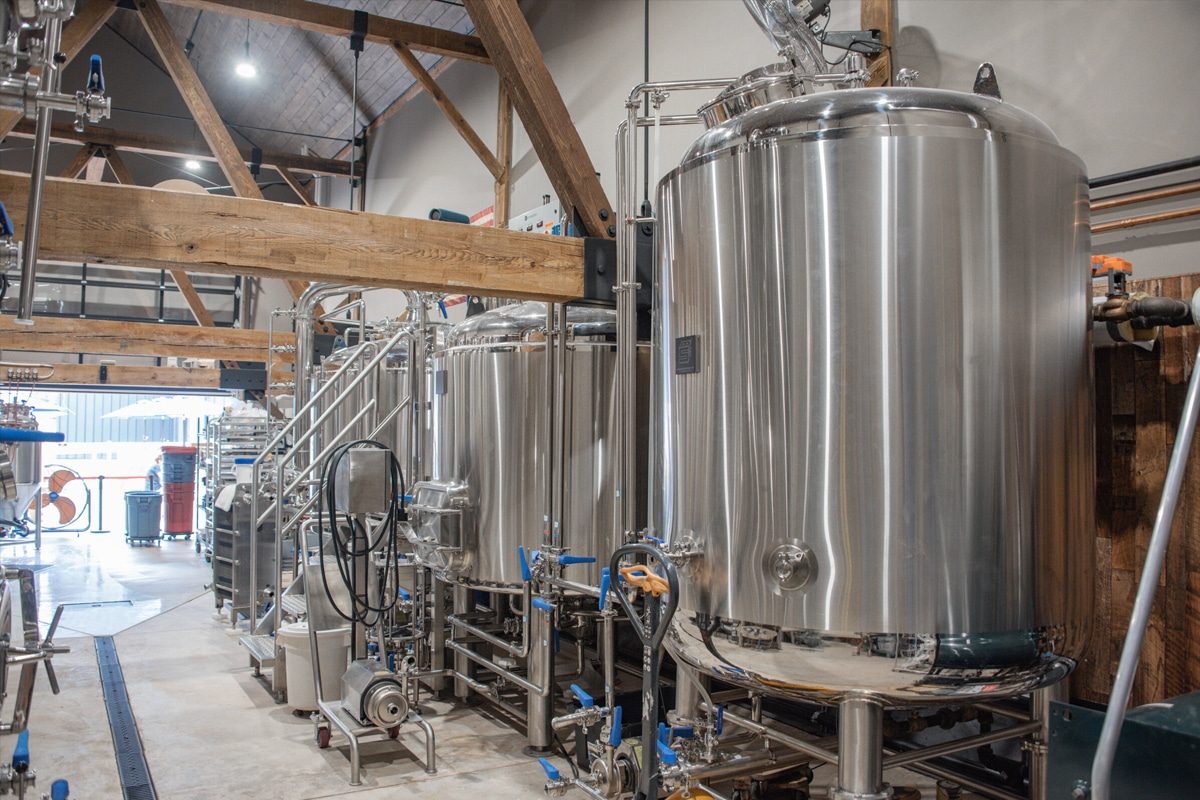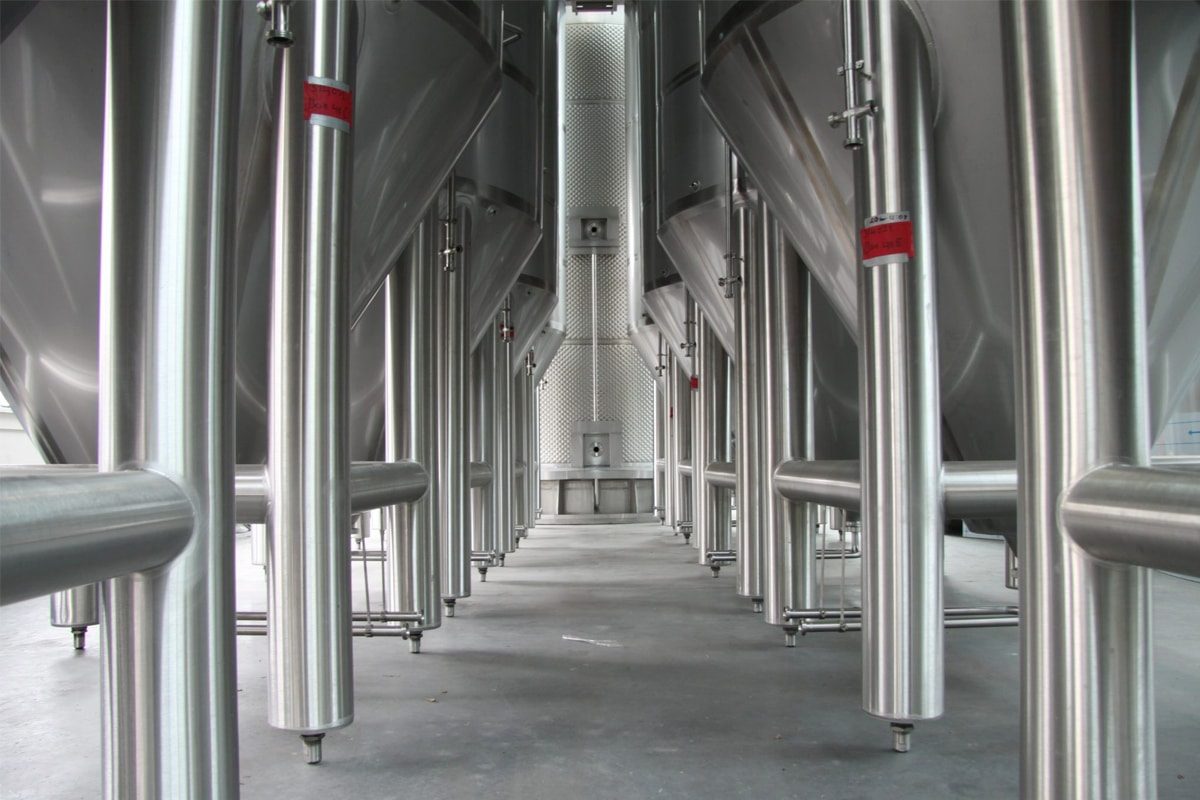
What Is The Ratio of Fermentation Tanks To Bright Tanks?
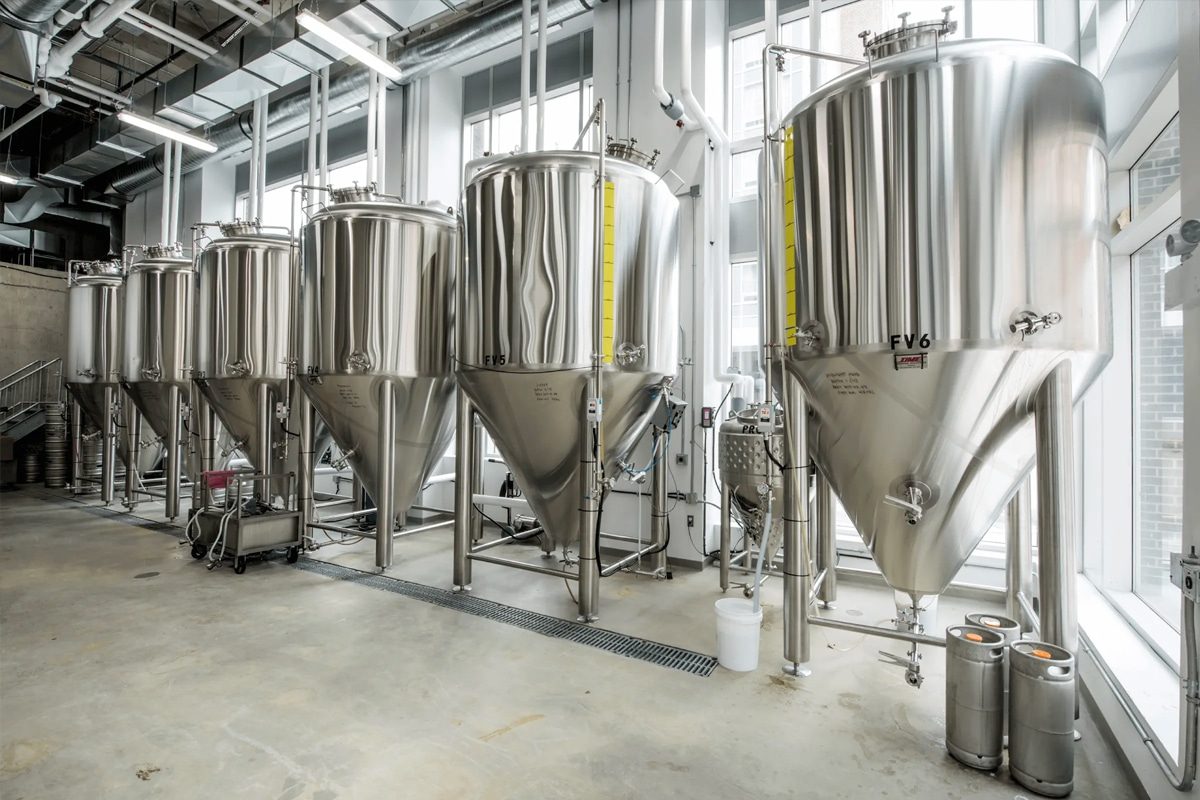
Understanding Fermentation Tanks
Overview of Fermentation Tanks
Functions of Fermentation Tanks
- Primary Fermentation: The primary function of fermentation tanks is to facilitate the primary fermentation process. During this stage, yeast cells metabolize the sugars present in the wort, producing alcohol and carbon dioxide as byproducts. This crucial step lays the foundation for the beer’s flavor, aroma, and alcohol content.
- Temperature Control: Maintaining precise temperature control helps ensure optimal yeast activity and fermentation results. Fermentation tanks are equipped with cooling or heating systems, allowing brewers to regulate temperature and create the ideal conditions for yeast fermentation.
- Flavor Development: Fermentation tanks provide an environment for complex biochemical reactions to occur, leading to the development of various flavor compounds. Factors such as yeast strain, fermentation temperature, and wort composition influence the flavor profile of the final beer, making fermentation tanks integral to flavor development.
- Yeast Management: Proper yeast management can help achieve consistent fermentation results and maintain beer quality. Fermentation tanks allow brewers to pitch yeast into the wort, monitor yeast health and activity, and harvest yeast for future batches. Effective yeast management practices contribute to the stability and character of the finished beer.
Types of Fermentation Tanks
- Stainless Steel Conical Tanks: These cylindrical tanks with conical bottoms are ubiquitous in modern breweries due to their durability, ease of cleaning, and efficient yeast harvesting capabilities. Stainless steel construction also minimizes the risk of contamination and allows for precise temperature control.
- Open-Top Fermentation tanks: Traditionally used in Belgian brewing and lambic production, open-top fermentation tanks offer greater exposure to ambient microorganisms and oxygen, resulting in unique flavor profiles. These vessels are often used for spontaneous fermentation or mixed-culture fermentations, where wild yeast and bacteria play a significant role in flavor development.
- Uni-Tanks: Uni-tanks, or unitank fermenters, are versatile vessels that combine fermentation and conditioning capabilities in a single tank. These tanks allow brewers to streamline their production process, eliminating the need for transferring beer between multiple vessels. Uni tanks are commonly used in smaller breweries or those producing a wide range of beer styles.
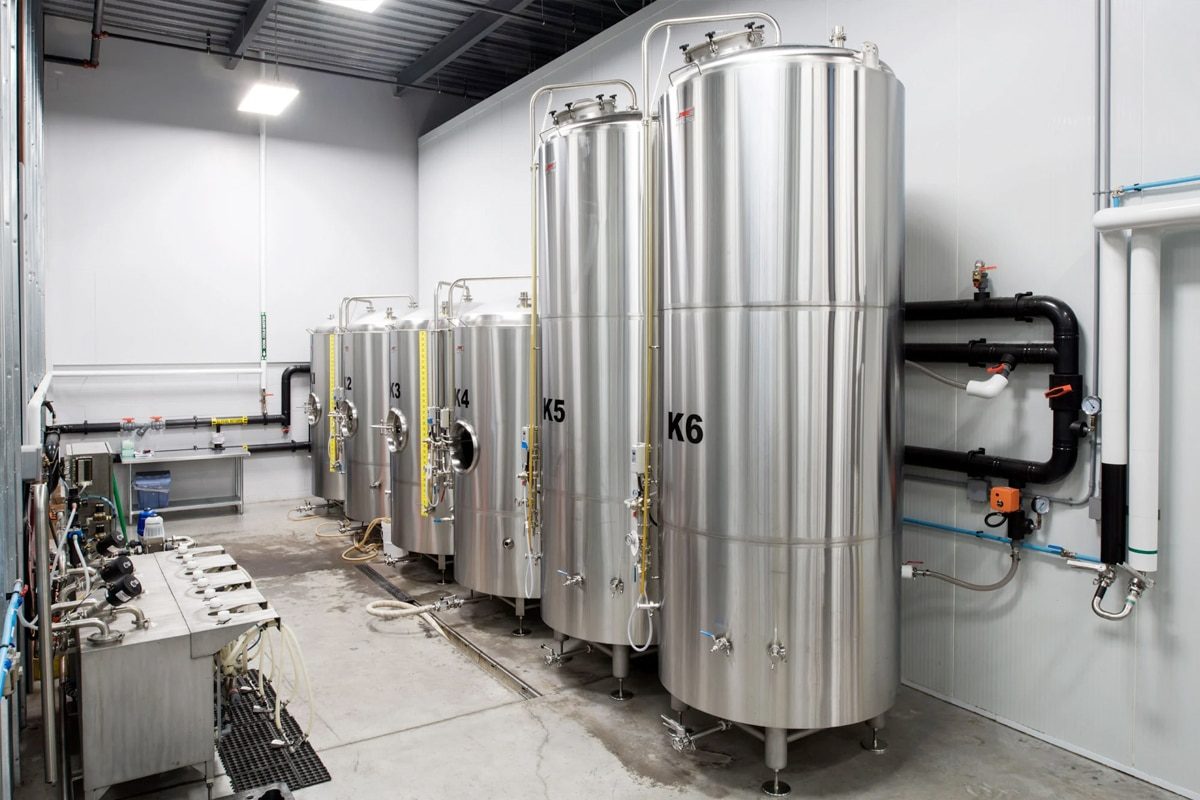
Exploring Bright Tanks
Overview of Bright Tanks
Functions of Bright Tanks
- Clarification: One of the primary functions of bright tanks is to facilitate the clarification of beer by allowing suspended particles and yeast to settle out. This process results in a clearer and visually appealing final product, enhancing the beer’s appearance and stability over time.
- Carbonation: Bright tanks are equipped with carbonation systems that allow brewers to introduce carbon dioxide into beer, ensuring that it achieves the desired level of carbonation. Proper carbonation enhances the beer’s mouthfeel, effervescence, and overall drinking experience.
- Conditioning: Bright tanks provide the ideal environment for beer to undergo further maturation and conditioning. During this stage, flavors harmonize, and any off-flavors are reduced, resulting in a smoother and more balanced final product.
- Packaging Preparation: Bright tanks serve as the final step in the brewing process before beer is packaged into bottles, cans, or kegs. Brewers may perform final filtration, if necessary, and conduct quality checks to ensure that the beer meets their standards before it is distributed to consumers.
Types of Bright Tanks
- Horizontal Bright Tanks: Horizontal bright tanks are commonly used in traditional lager breweries for lagering and conditioning large volumes of beer over extended periods. These tanks are typically equipped with glycol cooling jackets to maintain stable temperatures during conditioning.
- Vertical Bright Tanks: Vertical bright tanks are more space-efficient and versatile, making them popular choices in craft breweries and brewpubs. These tanks are used for conditioning, carbonation, and storage of smaller batch sizes, allowing breweries to produce a diverse range of beer styles.
- Jacketed Bright Tanks: Jacketed bright tanks feature cooling or heating jackets that surround the tank’s exterior, allowing brewers to regulate temperature during conditioning and carbonation. This precise temperature control ensures optimal beer quality and stability throughout the packaging process.
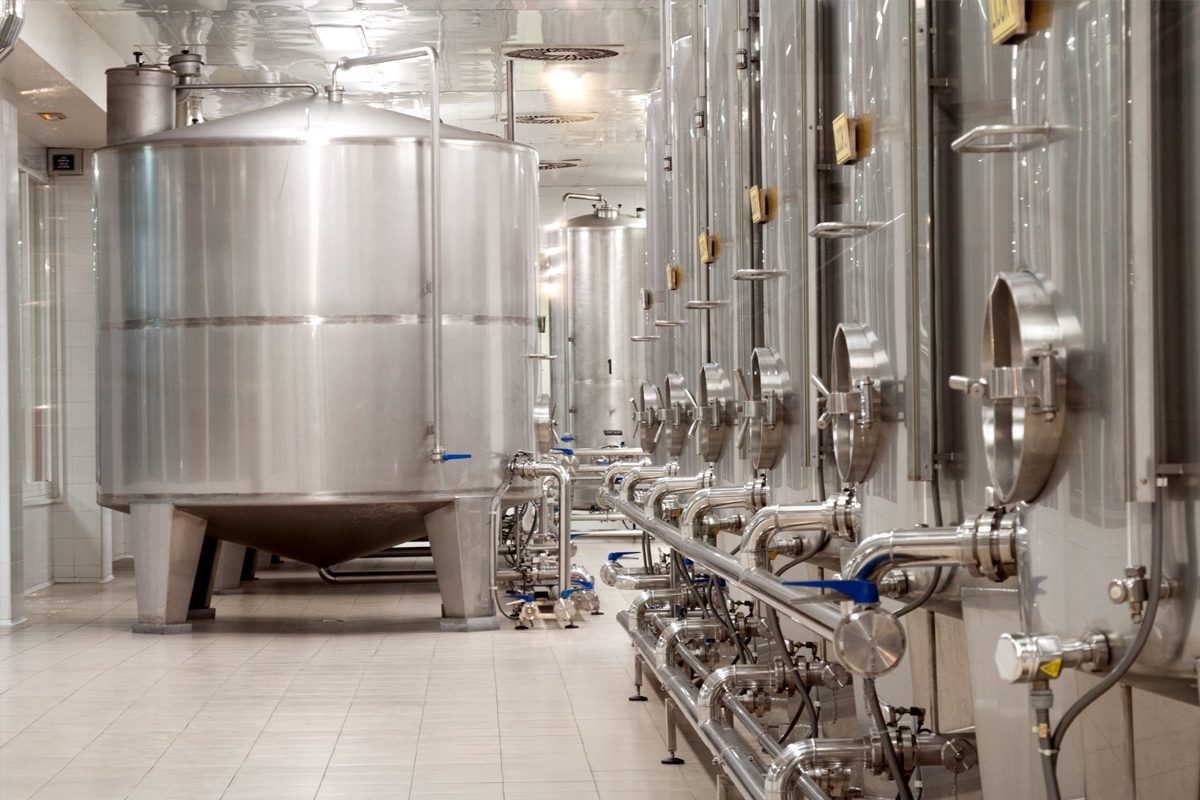
Determining the Ratio of Fermentation Tanks to Bright Tanks
Factors Influencing the Ratio
Several factors play a significant role in determining the appropriate ratio of fermentation tanks to bright tanks in a brewery. Understanding these factors can help breweries optimize capacity and efficiency.
- Production Volume: The volume of beer a brewery aims to produce within a given timeframe directly impacts the ratio of fermentation tanks to bright tanks. Breweries with higher production volumes typically require more fermentation tanks to accommodate the increased brewing capacity.
- Turnaround Time: The desired turnaround time for brewing and conditioning beer is another key factor in determining the ratio. Breweries aiming for quicker turnaround times may opt for a higher ratio of fermentation tanks to expedite the brewing process and minimize production bottlenecks.
- Beer Styles: Different beer styles have varying fermentation and conditioning requirements, which can influence the ratio of fermentation tanks to bright tanks. Breweries producing a wide range of beer styles may adjust the ratio based on the fermentation and conditioning needs of each style.
- Distribution Channels: Breweries distributing beer over large geographical areas may require more bright tanks to store and condition beer before packaging and distribution. The distribution model and logistics involved can impact the ratio of fermentation tanks to bright tanks.
Calculating the Ideal Ratio
Determining the ideal ratio of fermentation tanks to bright tanks involves careful consideration of the brewery’s production goals, capacity, and operational requirements. While there is no one-size-fits-all approach, breweries can use the following guidelines to calculate an approximate ratio:
- Estimate Production Capacity: Begin by estimating the maximum volume of beer that the brewery aims to produce within a given timeframe, such as barrels per month or hectoliters per year.
- Consider Turnaround Time: Determine the desired turnaround time for brewing and conditioning beer, taking into account fermentation and conditioning times for different beer styles. Consider factors such as fermentation temperature and yeast strain to ensure optimal fermentation outcomes.
- Assess Distribution Needs: Consider the brewery’s distribution channels and the time required for packaging and distributing beer to consumers. Determine how many bright tanks are needed to store and condition beer before packaging and distribution.
- Calculate the Ratio: Divide the estimated production capacity by the desired turnaround time to determine the average monthly production volume. Then, calculate the ratio of fermentation tanks to bright tanks based on the brewery’s production volume and distribution needs.
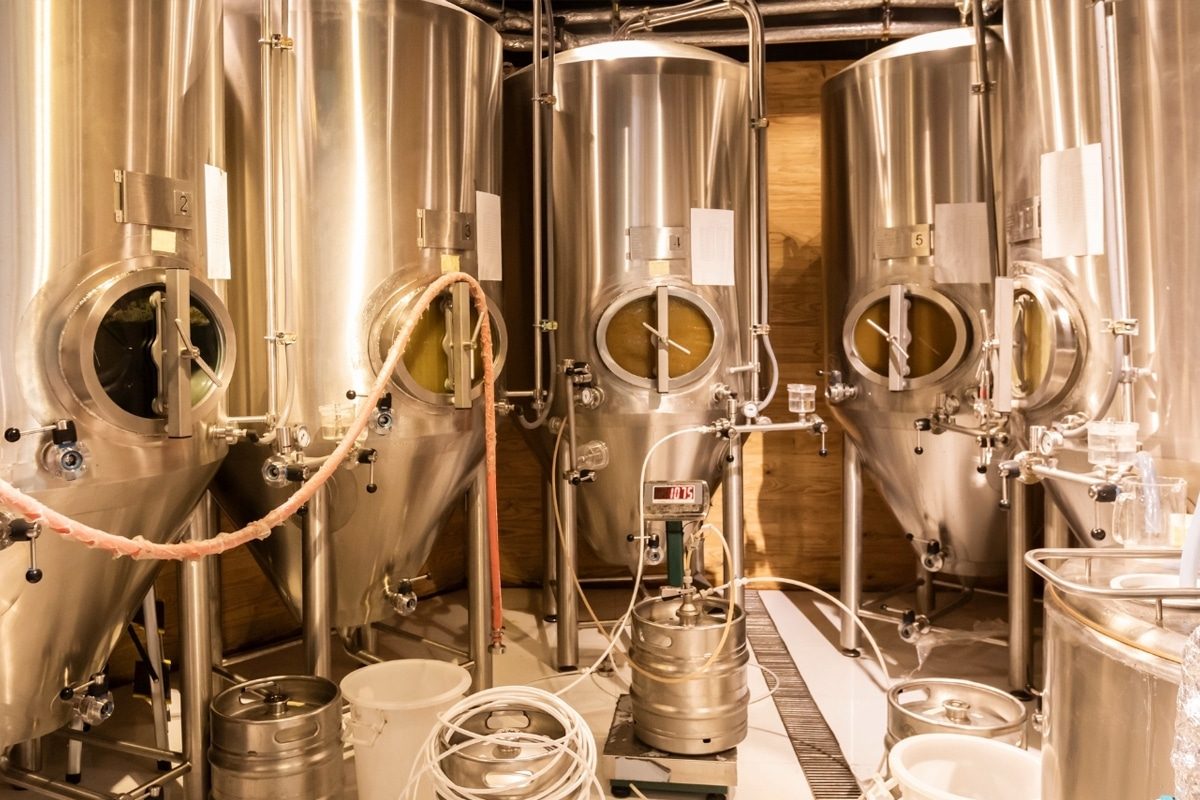
Practical Considerations for Brewery Operations
Brewery Layout and Space Planning
Efficient brewery layout and space planning help maximize productivity and workflow. Consider the following tips:
- Flow Optimization: Design the brewery layout to minimize unnecessary movement of personnel and equipment, ensuring smooth material flow from raw ingredients to finished products.
- Space Efficiency: Utilize available space effectively by arranging equipment and storage areas in a logical and accessible manner. Consider vertical storage options to maximize floor space.
- Expansion Planning: Anticipate future growth and expansion needs when designing the brewery layout. Leave room for additional equipment and capacity upgrades to accommodate increased production demand.
Equipment Maintenance and Cleaning
Regular maintenance and cleaning of brewery equipment can help ensure product quality and prevent contamination. Implement the following practices:
- Scheduled Maintenance: Develop a comprehensive maintenance schedule for all brewery equipment, including fermentation tanks, bright tanks, pumps, and filters. Regularly inspect and service equipment to identify and address potential issues before they escalate.
- Cleaning Protocols: Establish standard operating procedures (SOPs) for cleaning and sanitizing brewery equipment. Use approved cleaning agents and sanitizers to maintain sanitary conditions and prevent microbial contamination.
- Equipment Calibration: Calibrate brewing equipment regularly to ensure accuracy and consistency in brewing processes. Monitor equipment performance and make adjustments as needed to maintain product quality and efficiency.
Quality Control and Assurance
Maintaining quality control and assurance processes ensures the production of consistently high-quality beer. Consider the following practices:
- Quality Testing: Implement robust quality testing protocols to monitor beer quality throughout the brewing process. Conduct sensory evaluations, chemical analyses, and microbiological tests to identify and address any deviations from desired quality standards.
- Ingredient Traceability: Maintain detailed records of ingredient sourcing, usage, and batch information to ensure traceability and accountability. Track ingredient quality and performance to identify trends and make informed decisions for recipe formulation and process optimization.
- Continuous Improvement: Foster a culture of continuous improvement within the brewery by encouraging feedback and collaboration among brewing staff. Regularly review quality control data and performance metrics to identify areas for improvement and implement corrective actions as necessary.
Staff Training and Development
Investing in staff training and development is crucial for building a skilled and knowledgeable workforce. Consider the following strategies:
- Technical Training: Provide comprehensive training programs for brewing staff to develop expertise in brewing techniques, equipment operation, and quality control procedures. Offer hands-on training sessions and educational opportunities to enhance skills and knowledge.
- Safety Training: Prioritize safety training for brewery staff to minimize the risk of workplace accidents and injuries. Ensure that employees are trained in proper handling of brewing chemicals, equipment operation, and emergency procedures.
- Professional Development: Encourage ongoing professional development for brewing staff through workshops, seminars, and industry certifications. Support career advancement opportunities and mentorship programs to foster growth and retention of talented employees.
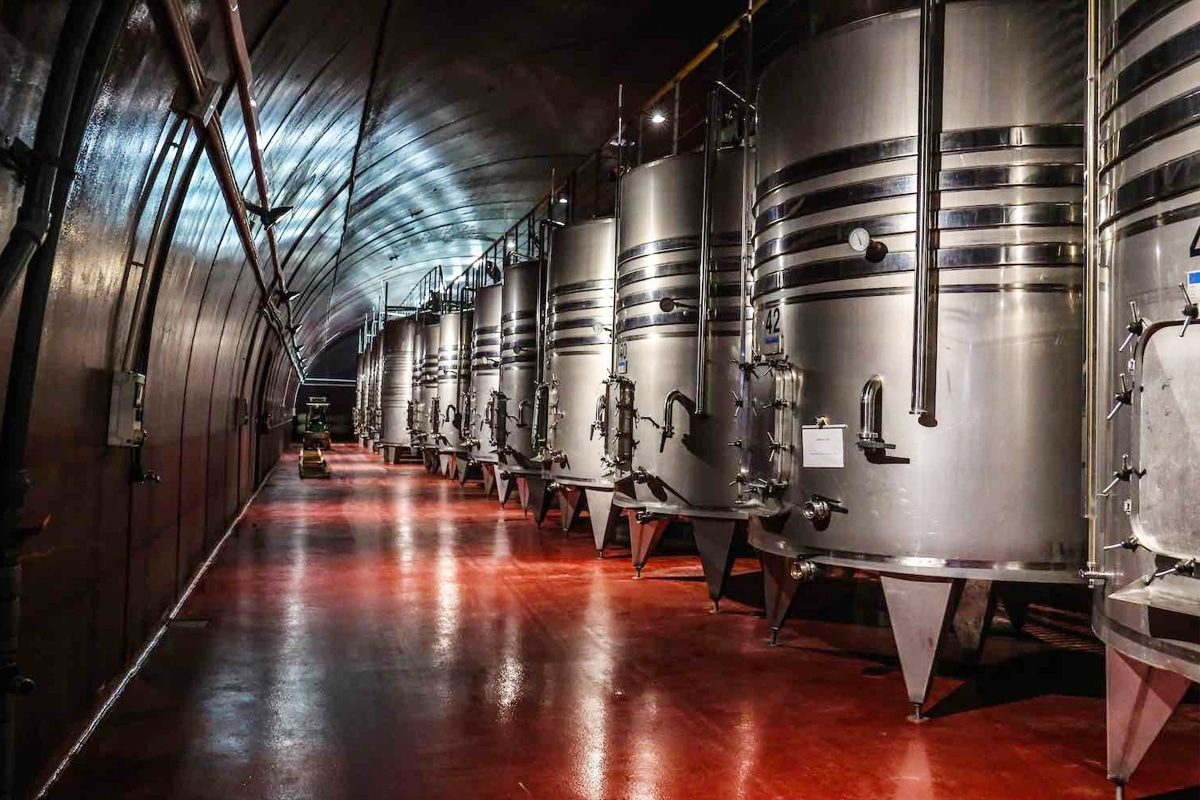
Summary
